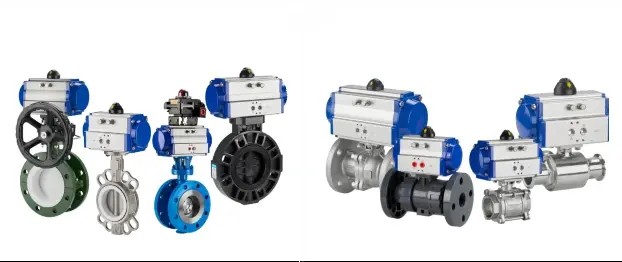


Control Valve Working Principle: A Comprehensive Guide
Control valves are essential components in industrial systems, designed to regulate key parameters such as pressure, temperature, and flow rate. By controlling fluid flow, these China Control Valves ensure that processes operate efficiently, accurately, and safely. This article explores how control valves work, detailing their components, operation, and industrial applications.
A control valve is a device used to regulate the flow of fluids—gases, liquids, or steam—by varying the size of the flow passage. Actuated manually or automatically, control valves maintain desired process conditions by responding to input signals from control systems.
Sensors installed along the pipeline continuously measure process variables such as flow rate, pressure, and temperature. For example, in a steam system, sensors monitor pressure levels to ensure they remain within set limits.
A Distributed Control System (DCS) or Programmable Logic Controller (PLC) receives sensor data and compares it to predefined set points. If a deviation is detected, the system calculates the corrective action needed to bring the process back to the desired condition.
Based on the analysis, the control system sends a signal to the actuator to adjust the valve position. Signal types include:
Manual – Operator physically adjusts the valve using a handwheel.
Pneumatic – Compressed air drives the actuator; commonly used in industrial applications.
Electric – Electrical signals control the actuator; known for precision and ease of automation.
Hydraulic – Hydraulic fluid powers the actuator; suitable for high-force, large-valve applications.
The actuator translates the control signal into mechanical motion to reposition the valve stem, modifying the flow passage:
To reduce flow: The actuator closes the valve further.
To increase flow: The actuator opens the valve wider.
This allows precise modulation of the process variable—such as flow rate in a liquid pipeline.
The system continuously monitors updated process variables. If conditions still deviate from the set point, the control loop issues further commands to refine the valve position. This closed-loop feedback ensures stable, accurate control.
Different control valves suit different applications:
Globe Valves: Provide accurate throttling and are ideal for frequent modulation.
Ball Valves: Offer fast shut-off and are suitable for high-pressure on/off control.
Butterfly Valves: Compact and lightweight, ideal for large-volume flow in low-pressure systems.
Diaphragm Valves: Isolate fluid from moving parts; excellent for corrosive or abrasive media.
Plug Valves: Used in applications needing tight shut-off and moderate flow control.
Control valves are vital in sectors such as:
Oil & Gas: Flow regulation in pipelines, refineries, and distribution networks.
Power Generation: Steam and coolant control in turbines and boilers.
Chemical Processing: Maintaining exact pressures and temperatures in reactors and separators.
Water Treatment: Flow management in filtration, storage, and distribution.
Pharmaceuticals: Precision in mixing and dosing during drug formulation.
Precision: Enables fine-tuned regulation of critical process parameters.
Efficiency: Reduces energy waste and enhances overall system performance.
Reliability: Integrated feedback systems ensure consistent operation.
Versatility: Available in a variety of designs and materials for diverse environments.
While control valves are highly beneficial, they come with certain operational challenges:
Cavitation & Flashing: Vapor formation due to pressure drops can erode valve components.
Erosion & Corrosion: Harsh media or high velocities degrade internal parts over time.
Actuator Malfunctions: Require routine inspection and maintenance to prevent downtime.
Complexity: Installation and calibration demand skilled professionals and advanced tools.
Control valves are the backbone of automated process control in modern industries. By working in harmony with sensors, controllers, and actuators, they ensure that vital processes remain within desired operating conditions.
Understanding the working principles, selecting the appropriate valve type, and maintaining the system properly are key to achieving efficiency, reliability, and cost-effectiveness. As technology evolves, control valves will continue to play a pivotal role in enhancing industrial automation and performance.Know more about Google SEO Directory
